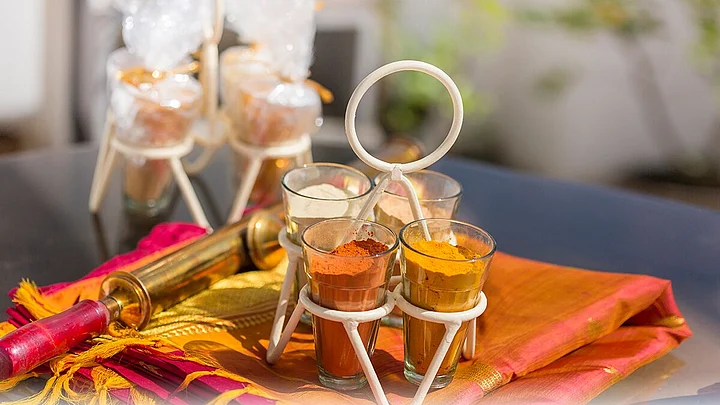The process of making colours for Holi is a spell-binding one. How else would you describe the thrill of seeing haldi being turned into glorious gulaal?
Going back to the age-old tradition of making natural coloured powders, we bring you a sneak peak into the process of making Lal Abeer, a powder that gets its hue from haldi (turmeric) mixed with an arrowroot base.


To make Lal Abeer powder, arrowroot and haldi are crushed together to create a gorgeous, crimson hue.
.gif?auto=format%2Ccompress&fmt=webp&width=720)
Simultaneously, a mixture of lime powder (eaten with paan or betel leaves) and water is prepared so it can be added to the mixture of arrowroot and haldi.
.gif?auto=format%2Ccompress&fmt=webp&width=720)
Then, the lime mixture is added to the arrowroot and haldi. The alkaline lime reacts with haldi and converts it into a red coloured mixture.
.gif?auto=format%2Ccompress&fmt=webp&width=720)
Afterwards, the mixture is dried and taken through a sieve. What remains is Lal Gulaal, a natural, chemical-free colour.

Since time immemorial, Holi colours have been made from natural colourants like rose petals, haldi, and henna. Up until a few years ago, it was commonplace for households in Uttar Pradesh and nearby areas to make colours at home for the family to play Holi with.
Holi is arguably the most carefree festival in India. While it is played with youthful abandon, the festival could prove to be a lot more fun with the surety of having made colours of your own, says arts curator Himanshu Verma.
Verma is the founder of Red Earth, an independent private arts organisation based in New Delhi that has unveiled a line of Swarang, or self made colours. Verma says he believes the process of mixing colours makes him more sensitive to the delicate nuances of colour, and helps him in the enrichment of his aesthetic and artistic impulses.
Like many other Indian festivals, Holi, too, is a celebration of the agrarian spirit of the nation. It is only apt then to celebrate this festival with colours that are made from ‘natural’ ingredients.
(At The Quint, we question everything. Play an active role in shaping our journalism by becoming a member today.)
